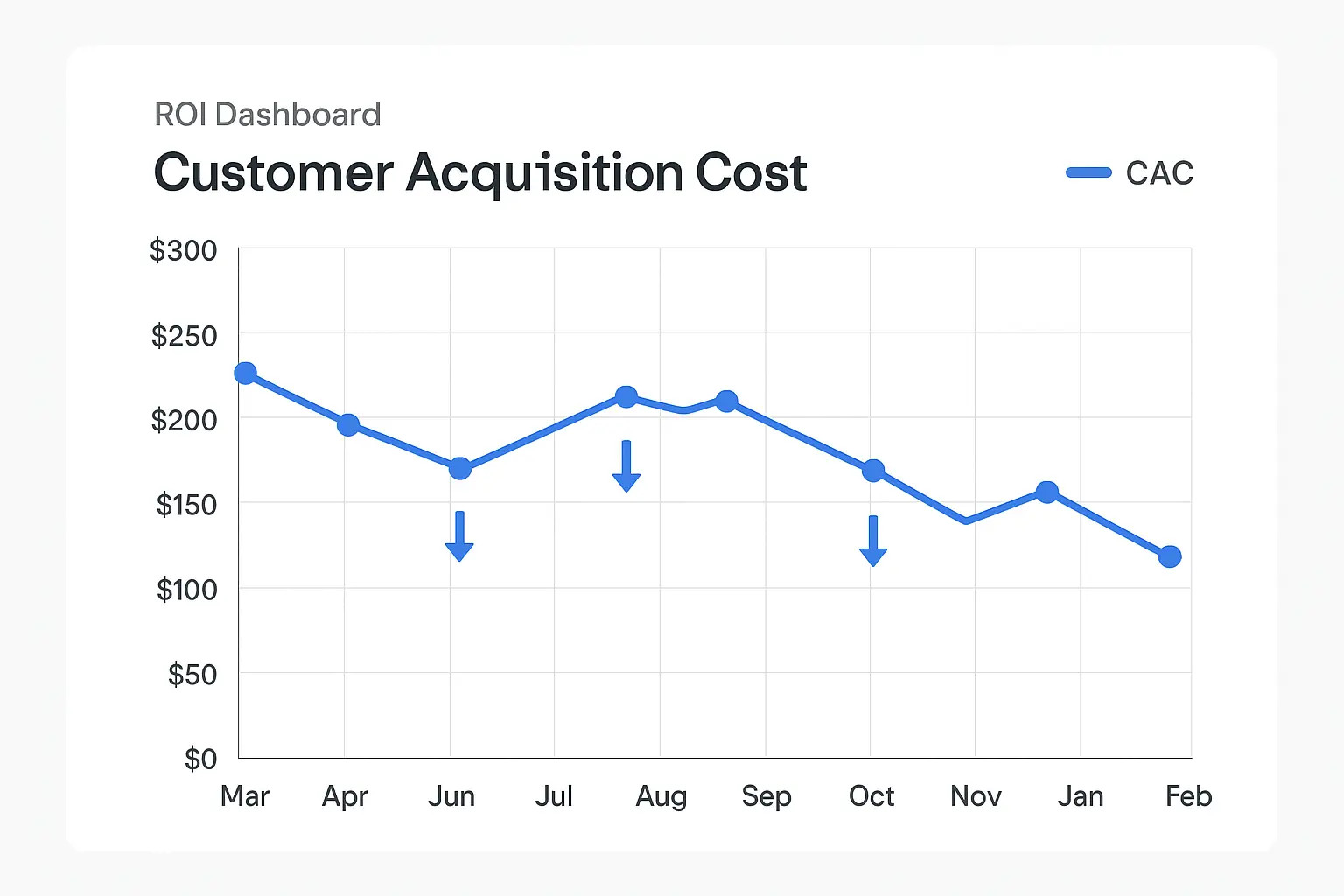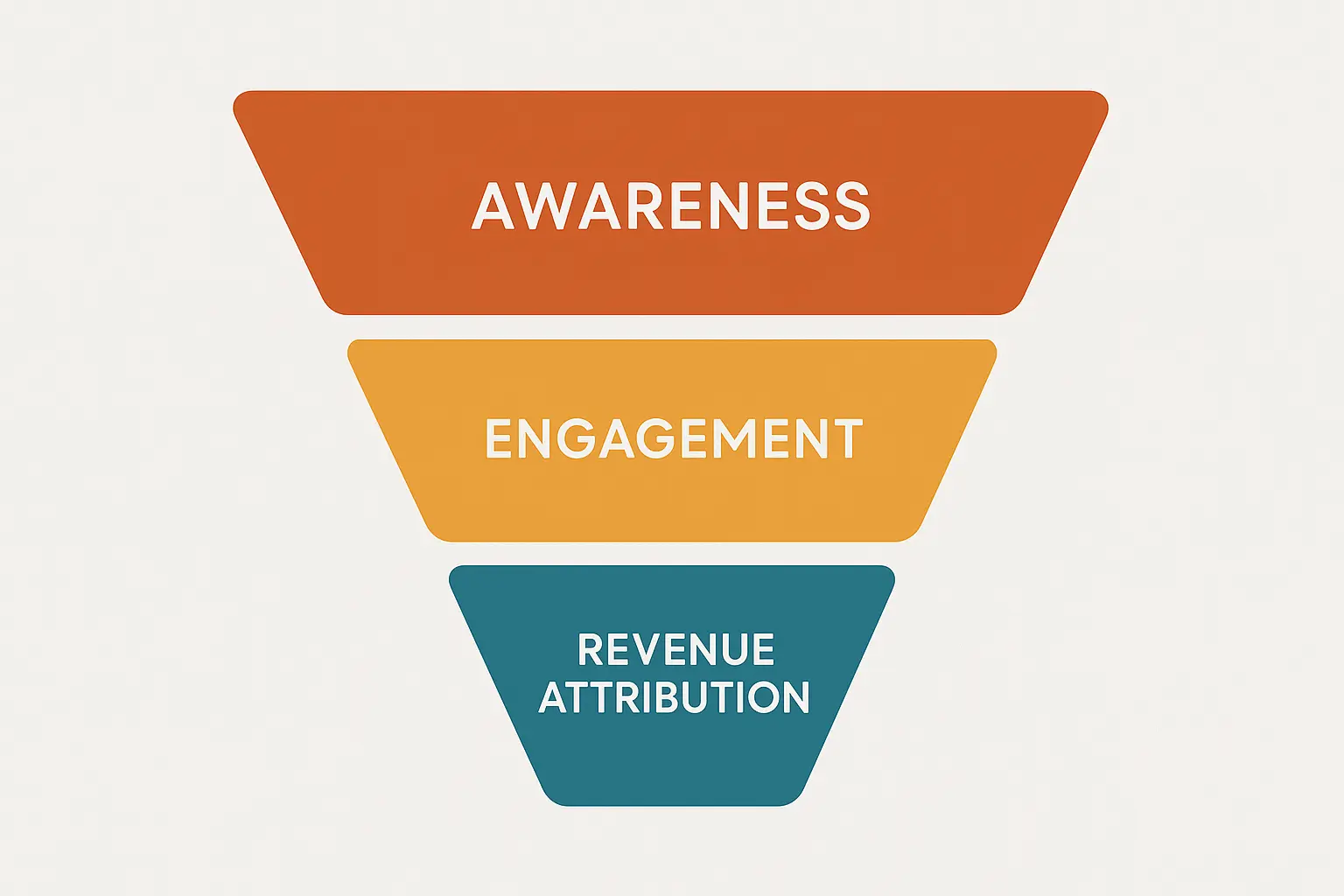ROI Tracking for Agencies: Which Metrics Actually Matter to Clients
In the world of agency-client relationships, few phrases create as much tension as “show me the ROI.”
Behind that simple request lies a fundamental truth: brands don’t invest in campaigns, design, or influencer marketing for likes or impressions. They invest to grow their business.
The challenge for agencies isn’t just tracking ROI, but tracking the right ROI metrics that prove measurable impact.
In a landscape filled with dashboards and data overload, knowing which numbers truly matter has become both a strategy and a differentiator.
The Vanity Metrics Trap
Before diving into what really matters, let’s clarify what doesn’t.
Many agencies still fall into the vanity metric trap, proudly showcasing numbers that look great on paper but mean little for business growth:
-
Social media followers gained
-
Email open rates (especially post-iOS updates)
-
Website traffic increases without conversions
-
Impressions and reach without engagement
-
Page likes and video views
These metrics have value in context, but they’re not proof of ROI.
A client who gains 10,000 followers but sees no increase in qualified leads has no reason to celebrate.
The Core ROI Metrics That Actually Move the Needle
1. Customer Acquisition Cost (CAC)
Why it matters: CAC shows exactly how much your client spends to acquire one new customer. It’s concrete and actionable.
How to calculate:
Total marketing spend ÷ number of new customers acquired in that period.
What clients want to see:
A decreasing CAC over time or a CAC that’s significantly lower than the customer lifetime value (CLV).
Pro tip: Don’t just share the number, show the trend. A CAC dropping from $200 to $150 in six months tells a story of improvement.
2. Customer Lifetime Value (CLV or LTV)
Why it matters: CLV shows how much revenue a business earns from a customer over their full relationship.
It balances out CAC and helps justify long-term investments.
How to calculate:
Average purchase value × purchase frequency × average customer lifespan.
What clients want to see:
A CLV:CAC ratio of at least 3:1. Every dollar spent on acquisition should return at least three in customer value.
Pro tip: For subscription-based or influencer campaign clients, connect your retention strategies directly to CLV growth through content, loyalty, or consistent communication.
3. Revenue Attribution
Why it matters: Clients ultimately care about one thing: how your efforts drive revenue.
Revenue attribution connects actions (like influencer campaigns or paid ads) to real outcomes.
How to track it:
Use multi-touch attribution models that recognize every step of the customer journey.
Different models (first-touch, last-touch, linear) provide different insights, so align with your client’s priorities.
What clients want to see:
A clear path from campaigns to sales.
Saying “our campaign generated $47,000 in attributed revenue” hits much harder than “our email had a 23% click rate.”
Pro tip: If you’re managing multiple creators and campaigns, having all your data, rosters, media kits, and reports in one place saves hours of manual work.
That’s where a platform like CreatorsJet’s Influencer CRM can help agencies centralize creator performance, pitch decks, and campaign reporting efficiently.
4. Conversion Rate Optimization (CRO) Metrics
Why it matters: Improving conversion rates amplifies the results of every marketing effort.
A 2% increase in conversion can make every dollar spent 2% more effective.
What to track:
-
Landing page conversion rate
-
Form completion rate
-
Add-to-cart and checkout rates
-
Lead-to-customer conversion rates
What clients want to see:
Steady improvement through testing and optimization.
Show before-and-after comparisons from A/B tests, and link improvements directly to revenue.
Pro tip: Even a small change can make a big impact.
“Improving checkout conversion from 3.2% to 3.7% could generate $84,000 in additional yearly revenue.”
5. Return on Ad Spend (ROAS)
Why it matters: For paid campaigns, ROAS is the purest measure of efficiency. It answers: for every dollar spent, how many do we earn back?
How to calculate:
Revenue from ads ÷ total ad spend.
What clients want to see:
A ROAS that exceeds their profitability threshold (commonly 4:1 for e-commerce, though it varies).
Break it down by campaign and audience to show clarity in performance.
Pro tip: Context is key.
A ROAS of 2:1 might be excellent for a high-ticket B2B brand but weak for a fast-moving consumer product.
6. Lead Quality Metrics
Why it matters: For B2B agencies, quantity means nothing without quality.
What to track:
-
Lead-to-opportunity conversion rate
-
Opportunity-to-customer conversion rate
-
Average deal size
-
Time to close
What clients want to see:
That your leads are better qualified, convert faster, and generate higher deal values than other channels.
Pro tip: Collaborate with your clients’ sales teams. Their qualitative feedback validates your quantitative data.
7. Market Share Growth
Why it matters: For mature brands, market share growth signals real competitive advantage.
How to track:
Use competitive intelligence or share-of-search metrics to assess relative visibility and sales impact.
What clients want to see:
Proof that your campaigns are winning customers away from competitors, not just riding general market trends.
How to Present ROI Data That Actually Resonates
Tracking the right metrics is only half the challenge. The other half is how you present them.
-
Start with business outcomes, not marketing metrics
-
Tell stories, not numbers: “We reduced CAC by 32%” → “We lowered CAC from $215 to $146, enabling 47% more customers for the same spend”
-
Show trends, not isolated results
-
Address challenges directly and provide action plans
-
Compare to industry benchmarks for context
-
Connect the dots across channels to tell a unified ROI story
Building a ROI Tracking Framework
-
Establish baselines before launching any campaign.
-
Set up proper tracking with UTM parameters, pixels, and CRM integration.
-
Align success metrics during onboarding to prevent misaligned expectations.
-
Report consistently (monthly summaries, quarterly deep dives).
-
Tier your reporting for executives, marketing leads, and operational teams.
-
Document your methodology for transparency and credibility.
The Bottom Line
The metrics that matter most to clients are the ones tied directly to business success — revenue growth, profitability, and sustainable customer acquisition.
Agencies that focus on clarity and measurable outcomes transform from service providers into strategic partners.
And using organized systems to track, attribute, and report results makes that transformation much easier.
The question isn’t whether you can make great campaigns.
It’s whether you can prove they drive business results.
Master that, and you’ll never struggle to show your value again.
Create your media kit with CreatorsJet
Stand out from the competition with a professional media kit created with CreatorsJet. Share all your social media analytics with the click of a button.
🚀 Create your media kit in minutes
✅ Automatically updated
💬 Share with the click of a button
free forever, no credit card required.


